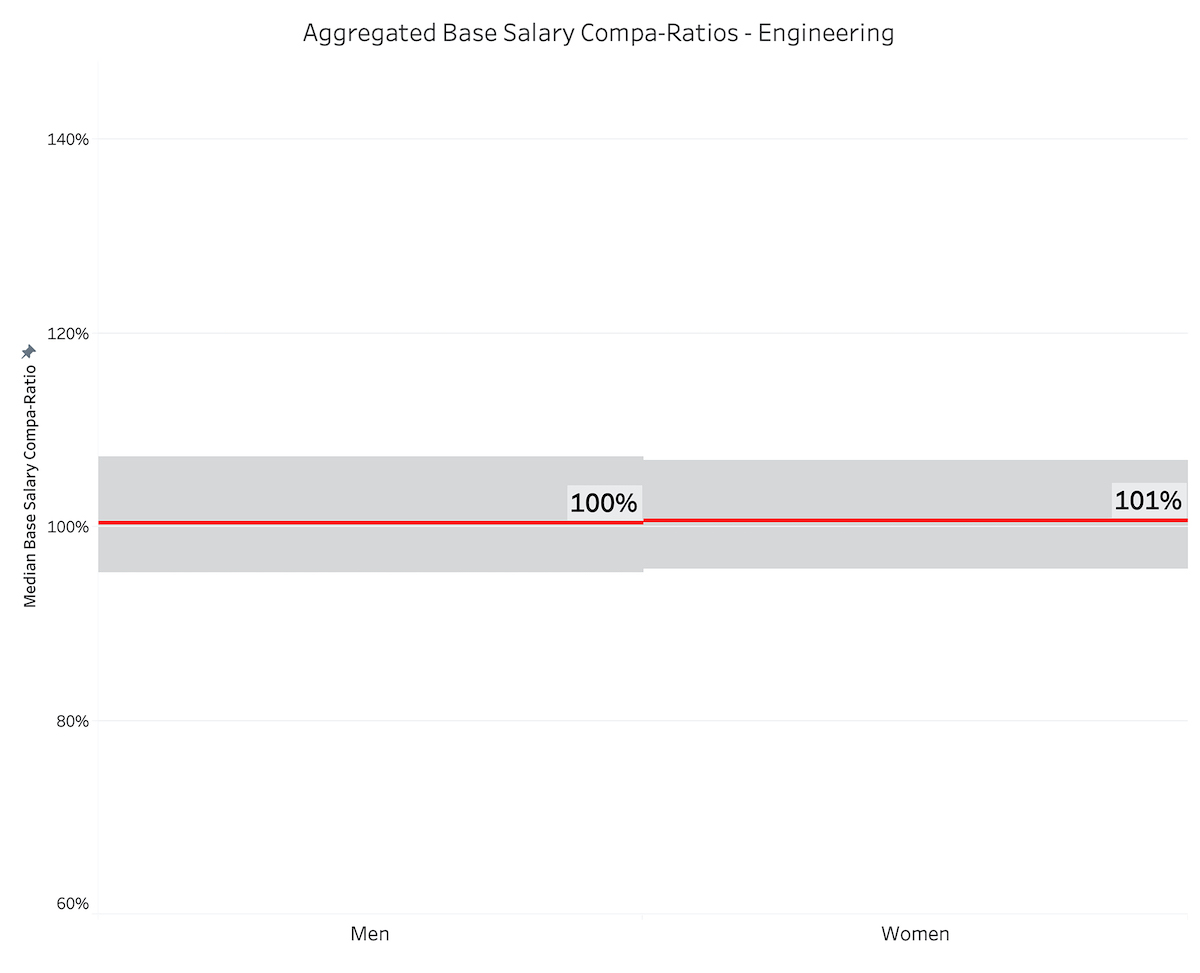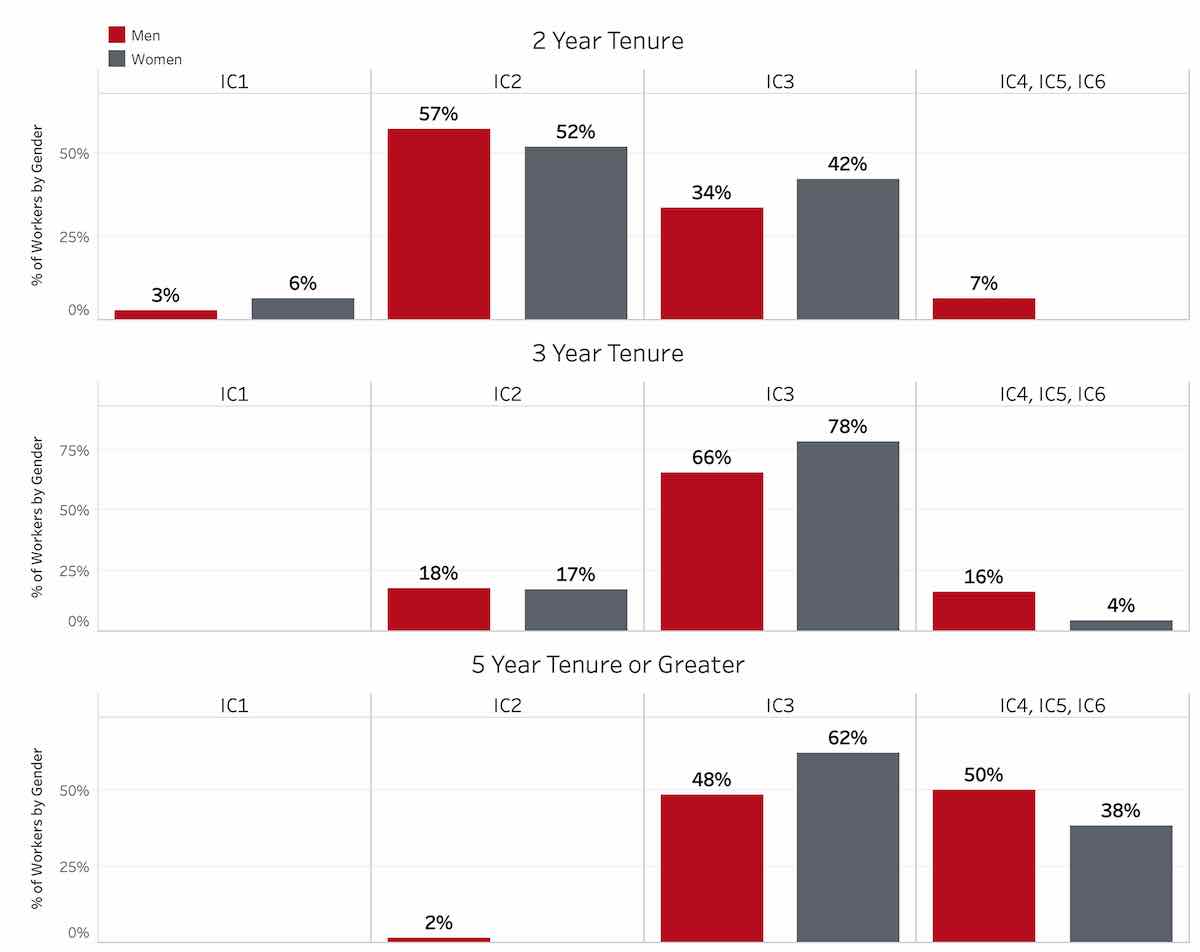Engineering Career Series: Ensuring Pay Equity & Career Progression in Yelp Engineering

-
Vivek Raman VP, Data & Trust Engineering and Beka Reddin, Manager, Business Partner
- Jul 15, 2021
At Yelp, we care deeply about ensuring all employees are compensated fairly for their contributions, regardless of their gender, race, and ethnicity. Within Yelp Engineering, we work hard to achieve equal pay for equal work through a combination of tactics:
- Well-defined career levels and corresponding pay bands
- A systematic levels calibration process across teams
- Transparency of our outcomes with the entire Engineering team
In a previous blog post, we described how we think about career progression and leveling. Each level within Engineering and Engineering Management has an associated merit band, equity band, and cash bonus target based on location. We use our leveling framework to help guide managers to place their employees at a position within those bands. For example, an engineer recently promoted to IC3 would likely fall towards the lower end of the IC3 level framework and pay band.
In order to ensure managers interpret and apply our career leveling framework consistently, we run calibration conversations on a quarterly basis. Calibration conversations are discussions among management peer groups about performance expectations of individuals on their team. These calibration conversations contribute towards more equitable pay by making sure expectations are consistent across teams.
Our frameworks and processes would be meaningless if we didn’t closely analyze our compensation data to ensure they are actually working. Within our Engineering org, we have committed to conducting a pay equity analysis annually and sharing the results internally with the entire Engineering team. We’re pleased to share some highlights from our latest analysis below.
As we look into our data, a few things immediately come to mind. First, the data is a snapshot of a point in time and is not entirely complete as we don’t have demographic data for all employees. Our analysis includes our full-time, individual contributor Engineering employees who have voluntarily provided their race, ethnicity and/or gender information, which is about three-quarters of this population. Second, we don’t expect pay to be identical for all people within a level, as we mentioned above when we talked about how we think about pay. Small pay gaps are to be expected for a number of factors that are unrelated to race, ethnicity, or gender – for example, performance, impact, and growth within level.
Third, we show gender in terms of women and men because we do not yet have enough data to represent a more nuanced view of gender identity, but we are working on improving our data to represent this more completely in the future. With respect to race and ethnicity, we have combined Black, Hispanic, Native Hawaiian/Other Pacific Islander, and American Indian or Alaska Native employees into an under-represented minority (URM) group in the data due to small sample size.
So how do we do the analysis? It’s important to understand compa-ratio. Our salary bands were developed by our compensation team and leaders, guided by our pay philosophy and the competitive market landscape. Compa-ratio is computed for each salary band, by taking each individual’s salary divided by the middle of the salary band for that role and level (50th percentile). We use the median compa-ratio - the red line represents the median compa-ratio of the population at that level and the gray bars represent quartiles.
Without further ado, let’s show you some data! First, we’ll start with gender. As you can see from the chart below, the median compa-ratio for men is 100% while women’s is 101%, which means, on average, men and women are paid nearly identically. Men do outnumber our women in Engineering and their distribution is slightly higher.

Next, let’s talk about race and ethnicity. As you’ll see in the chart below, all groups have compa-ratio medians within 2% of each other and the distribution of employees around the comp ratio medians appear relatively equal.

This is just a high level snapshot of the analysis we do at Yelp. We also dig deep into level progression to ensure employees progress across our levels at similar rates regardless of gender, race, or ethnicity. As an example, the chart below represents gender by level and tenure. It shows that progression through levels occurs at similar rates for men and women. At 2 years tenure, the majority of our employees sit at IC1, IC2, or IC3. By 5 years, the majority of employees are at IC3, IC4, IC5, or IC6.

As we cut the data, we run into smaller sample sizes that can result in disproportionate differentials. Whenever we find outliers, our leadership team looks at pay and level information on a case-by-case basis to ensure the outlier is due to legitimate, nondiscriminatory reasons like scope of impact, and takes action where needed through out-of-cycle level or pay adjustments to achieve equity and fairness. We’ve learned through this analysis that our framework and methodology have resulted in equitable pay.
We are always trying to improve our pay equity analysis. We continue to iterate how we look at total compensation to ensure equitable pay that attracts, motivates, and retains Engineering talent. We also have an opportunity to better report on gender identity in a non-binary way. We share our pay equity data with our employees annually and typically review the data twice a year (although with the challenges we faced during the pandemic, we prioritized investments in resources to assist our employees in 2020 and skipped the analysis that year). This ongoing analysis coupled with transparency and communication not only builds trust in our leaders and processes, but also keeps us accountable for our pay practices.
Up next: Fostering Belonging and Inclusion at Yelp
Continuing the conversation of gender identity, race, and ethnicity at Yelp, Trisha Walsh, Tenzin Kunsal, and Ian Fijolek will talk about our Employee Resource Groups and efforts made to promote a healthy work/life balance as well as mental health. If you’d like to join a team passionate about pay equity and inclusion, we’re hiring!
Read the other posts in the series:
- Building a happy, diverse, and inclusive engineering team
- Hiring a diverse team by reducing bias
- Using structured interviews to improve equity
- How we onboard engineers across the world at Yelp
- Career paths for engineers at Yelp
- Technical Leadership at Yelp
- How we think about engineering management
- Ensuring Pay Equity & Career Progression in Yelp Engineering
- Fostering inclusion & belonging within Yelp Engineering
- Building a thriving engineering team